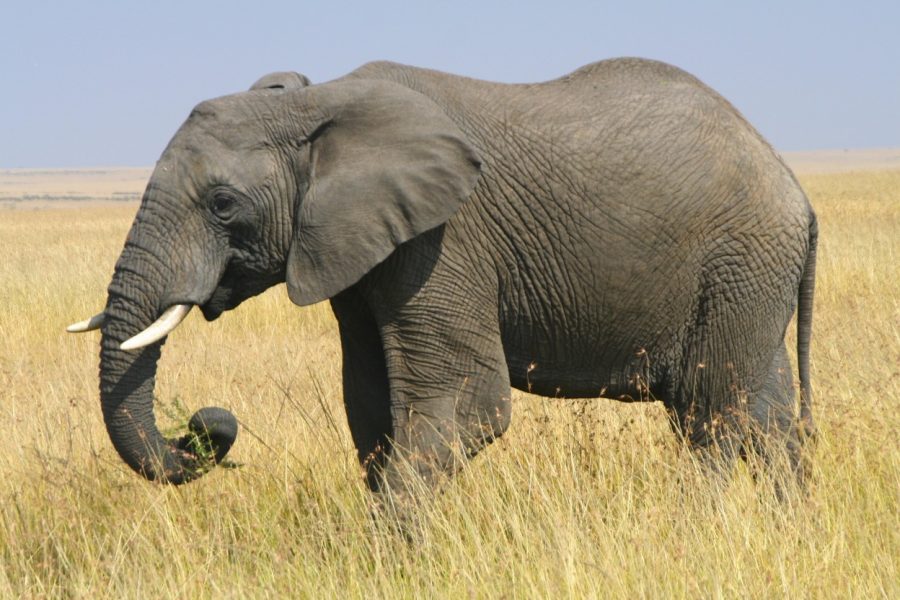Endangered Species Series: African Elephants
September 17, 2020
Loxodonta Africana, more commonly known as African Elephants, are listed as being vulnerable to extinction. A vulnerable species is considered likely to become endangered unless the circumstances that are threatening its survival decrease and reproduction increases. According to the World Wildlife website, since the African Elephant has a population of about 415,000 in the wild, they are a vulnerable species. The sharp decline in population is due to poaching for the international ivory trade.
Adult African elephants have an average shoulder height of eleven feet and length of nineteen to twenty-four feet. They also weigh in at six tons. These measurements make them the largest animal walking the earth. The easiest way to distinguish between an African elephant and other elephants, is their trunk and large ears. Elephants use their trunk for communication and handling objects and their ears to radiate excess heat. Another easy way to distinguish African elephants from other elephants is their tusks. African elephants’ tusks originate as upper incisor teeth that continuously grow throughout their lifetime.
Herds of African Elephants wander through 37 countries in Africa. There are two subspecies of African elephants, being the Savanna elephant and Forest elephant. Savanna elephants are larger than Forest elephants and their tusks curve outwards. Whereas Forest elephants are darker and their tusks are straighter and point downward. Furthermore, Forest elephants are uniquely adapted to the forest habitat of the Congo Basin whereas Savanna elephants are adapted for more open terrain.
The loss of African elephants would have a significant impact on other animal and plant species. African elephants help maintain suitable habitats for numerous other animal species. Up to 30 percent of tree species require animals such as these elephants to help with dispersal and germination to maintain their existence in central African forests. African elephants are also said to have a pivotal role in shaping their habitat due to influencing factors such as fresh water and forest cover.







